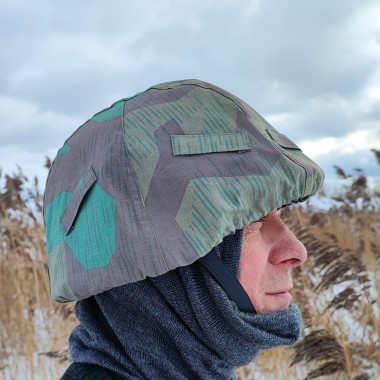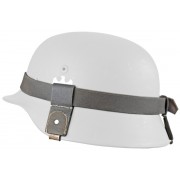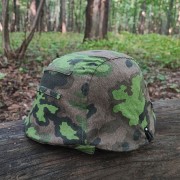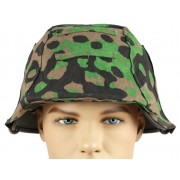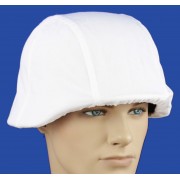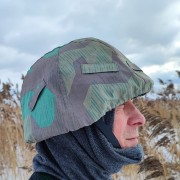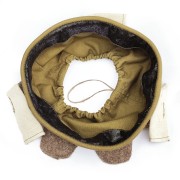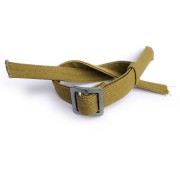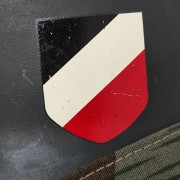Description
Helmet cover in Splinter camouflage, for the ground forces (Heer) of the Wehrmacht. Bilateral; theoretically it can be turned inside out and used in winter, as the back of the fabric is white. The material is camouflage on one side and white on the other side (like original). We have different shades.
Attached to the helmet with a drawstring. It fits all sizes of helmets, especially well on 66 and 68. In the photo, it is worn on a helmet 64.
Cover produced by "Replika". Seams with a "lock", and not on an overlock (a seam with a lock is stronger, it was on covers and blouses, but modern manufacturers replace it with an overlock, which is easier and cheaper). The inside of the cover is white (some manufacturers use camouflage backing color fabric to reduce the cost and do not think about the inside out).
Balaclava, helmet and other parts of clothing and equipment in the photo are not for sale; they are presented for clarity and comparison of color, size and texture of materials.
Historical reference.
There were several variants of the Splinter camouflage, however, it is difficult to notice, because the difference lies in the shape of just some spots. The geometry of the spots changed slightly, and on the products of the 1930s, they were different from the spots on the early 1940s ones. Even later, the "rain" on camouflage became more sparce and the shape of the "clouds" of this "rain" began to round off. Among the early experiments, there was also a brown version of the "Splittertarn" (where there was no green color). It was used to a limited extent in the troops, individual raincoats in such camouflage have come down to us.
"Splinter" was "autumn" and "summer" (in warm and cold colors, respectively). The fabric on which the camouflage was applied was different for different products. For raincoats, it was a dense fabric made of thin strong threads. For camouflage blouses, a lighter fabric. For winter jackets (it was in 1943, when the economy in the Reich was already bad), the fabric was thin, with a large number of synthetic threads, which significantly lost strength when wet.
The cover appeared in 1941. Prior to that, helmets were smeared with mud for camouflage purposes, wrapped in sackcloth or masked with grass tucked under a rubber band. It was used until the very end of the war, however, production ended around 1944 along with the introduction of covers from other camouflages.










